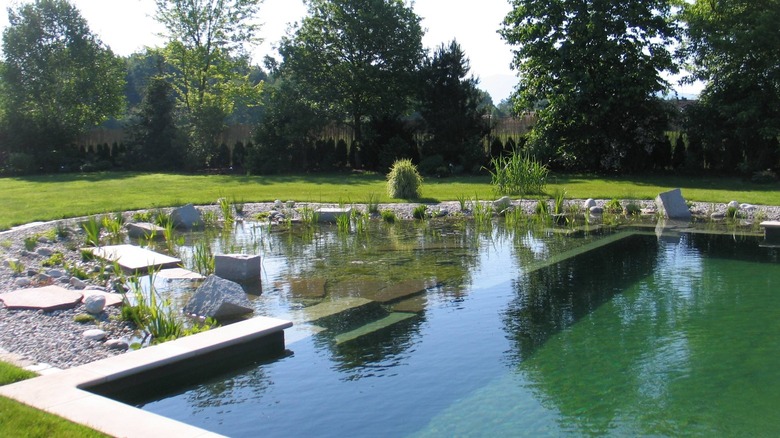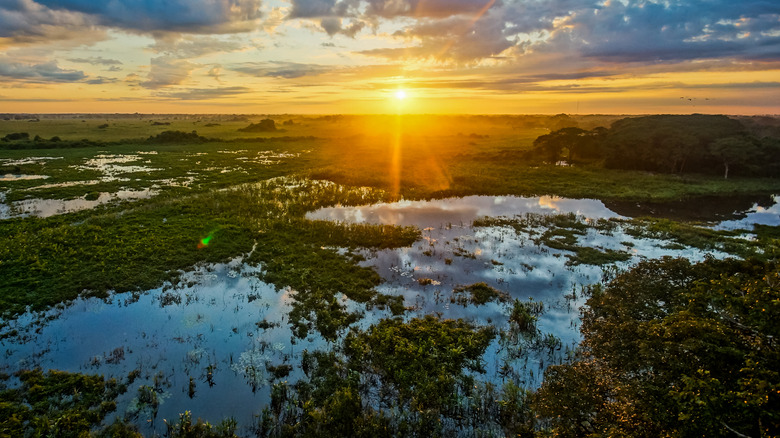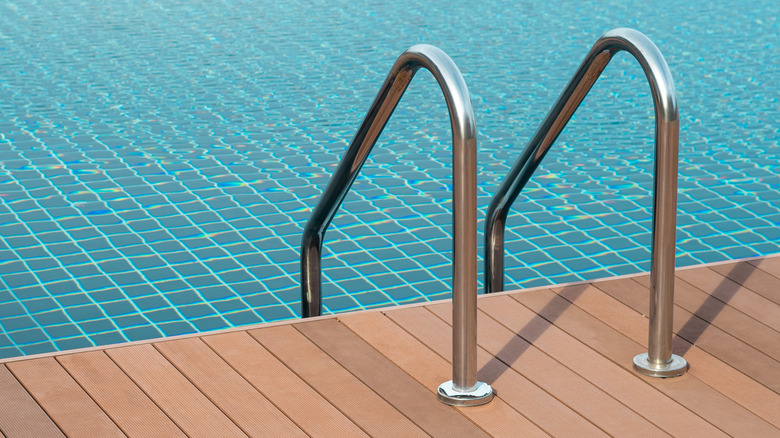The Science Behind Natural Swimming Pools
The smell of chlorine wafting off the local swimming pool is one of the quintessential smells of summer, right up there with campfire smoke and freshly-mowed grass. But it turns out there's a way to build and maintain a swimming pool without using any chlorine at all. A natural swimming pool doesn't use chemicals to keep its water clean. Instead, it relies on the same method that rivers and lakes do, as the Earth website explained. Its water is constantly filtered through a second pool called a regeneration basin that acts like a pond.
A natural swimming pool is really a system of two pools. The first is the pool you swim in, which is like a regular pool, lined with plastic or concrete, according to Permaculture Research Institute. The second is the regeneration basin, which is shallow and filled with water plants like cattails. A pump then moves water between the two pools. There are also aerobic and anaerobic bacteria in the regeneration basin and in a filter, according to Luxury Pools + Outdoor Living Magazine. These bacteria remove contaminants. Water is moved from the swimming pool through the filter to the regeneration basin where it is cleansed, and then it returns to the swimming pool. For example, the Webber Park Pool in Minneapolis recycles 500,000 gallons of water through its regeneration basin every 12 hours, according to Earth.
Mini wetlands
Natural pools, as their name suggests, are copying a strategy from nature. The regeneration basin filters water the way that wetlands do. In a wetland, there are lots of plants and rocks for bacteria to hang out on, as BBC Future reports. These bacteria gobble up common pollutants, while other contaminants get trapped by the mud underneath. This means that the water that leaves a wetland is cleaner than the water that enters it. The same is true for natural pools. "What we do with a natural swimming pool is we use that same process that Mother Nature uses, and we do it in an optimal fashion, so we do it very efficiently," BioNova Natural Pools president James Robyn told Sierra Magazine.
Natural pools also stay clean because the water is constantly moving between the two pools, Luxury Pools + Outdoor Living Magazine explained. This has the added advantage of making sure that mosquitoes don't gather near the pool, because they prefer still water. Another potential pest that the design of a natural pool keeps away is algae. While some will naturally grow in the regeneration basin, the other plants will compete with it for nutrients so that it doesn't take over.
Natural benefits
Natural swimming pools are a better choice for the environment. Installing a regular pool in your backyard can harm the environment in three ways, according to Sierra Magazine. They use a lot of water, a lot of energy, and dangerous chemicals. Chlorine manufacturing releases mercury, and chlorine in your local pool can contribute to ozone pollution. Frequent swimmers know that the chemicals in conventional swimming pools can irritate the eyes and skin after repeated exposure.
The chemicals used in conventional pools have to be manufactured and transported, and this requires greenhouse gas emissions that contribute to climate change. The plants in wetlands, on the other hand, sequester carbon dioxide from the atmosphere through photosynthesis, according to the Minnesota Board of Water and Soil Resources. The regeneration basins of natural swimming pools do the same. Natural pool company BioNova calculated that a 16x32-foot natural swimming pool would remove 0.256 metric tons of carbon dioxide from the air. This means that if conventional U.S. pools were replaced with natural swimming pools, it would be the equivalent of taking nearly 580,000 cars off the road every year. The regeneration basin has another ecological benefit, according to Earth: It provides a habitat for wildlife, including frogs and turtles. Natural swimming pools are truly the green way to swim.


